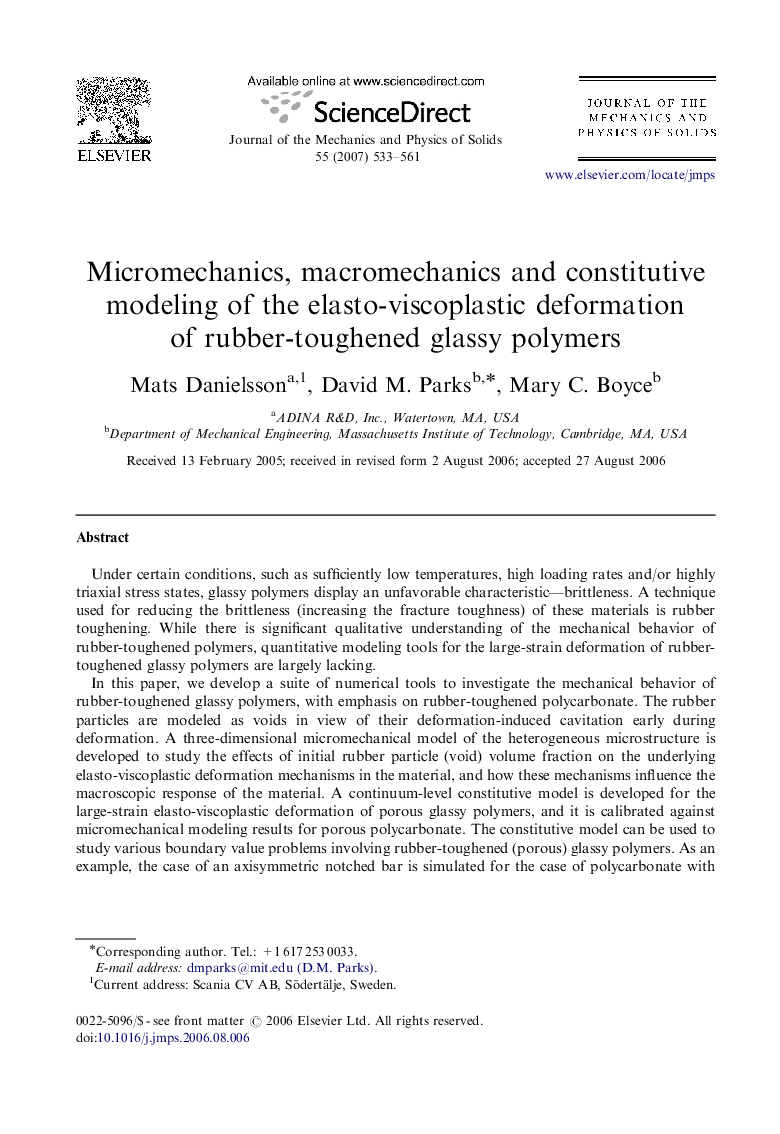| Article ID | Journal | Published Year | Pages | File Type |
|---|---|---|---|---|
| 797535 | Journal of the Mechanics and Physics of Solids | 2007 | 29 Pages |
Under certain conditions, such as sufficiently low temperatures, high loading rates and/or highly triaxial stress states, glassy polymers display an unfavorable characteristic—brittleness. A technique used for reducing the brittleness (increasing the fracture toughness) of these materials is rubber toughening. While there is significant qualitative understanding of the mechanical behavior of rubber-toughened polymers, quantitative modeling tools for the large-strain deformation of rubber-toughened glassy polymers are largely lacking.In this paper, we develop a suite of numerical tools to investigate the mechanical behavior of rubber-toughened glassy polymers, with emphasis on rubber-toughened polycarbonate. The rubber particles are modeled as voids in view of their deformation-induced cavitation early during deformation. A three-dimensional micromechanical model of the heterogeneous microstructure is developed to study the effects of initial rubber particle (void) volume fraction on the underlying elasto-viscoplastic deformation mechanisms in the material, and how these mechanisms influence the macroscopic response of the material. A continuum-level constitutive model is developed for the large-strain elasto-viscoplastic deformation of porous glassy polymers, and it is calibrated against micromechanical modeling results for porous polycarbonate. The constitutive model can be used to study various boundary value problems involving rubber-toughened (porous) glassy polymers. As an example, the case of an axisymmetric notched bar is simulated for the case of polycarbonate with varying levels of initial porosity. The quality of the constitutive model calibration is assessed using a multi-scale modeling approach.
